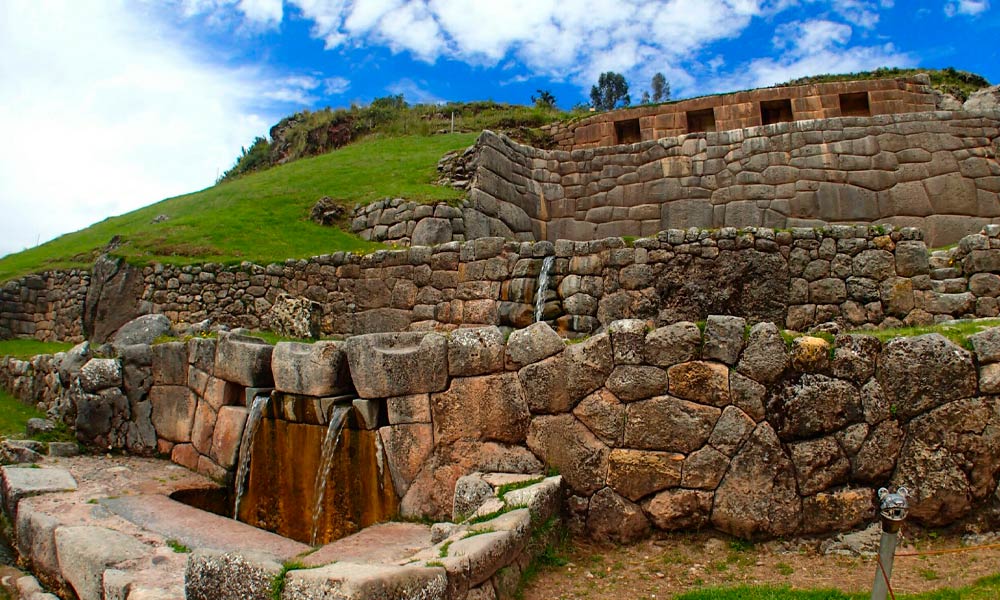When it comes to hiking the iconic Inca Trail to Machu Picchu, timing can make all the difference. Peru’s climate is a tapestry of diversity, influenced by the Andes Mountains and the nearby Amazon Rainforest. As such, comprehending the distinct seasons of this land is paramount for a rewarding and unforgettable journey. Here, we delve into the intricacies of each season, helping you decipher the perfect season for Inca Trail adventure. Whether you’re an adventurer, history enthusiast, or a nature lover, understanding the climate’s nuances ensures that your experience is nothing short of remarkable.
The dry season, spanning from May to October, is widely considered the most popular and favorable time for the Inca Trail. During these months, the skies are typically clear, and rainfall is minimal. The days are bathed in sunshine, making for comfortable and picturesque trekking conditions. The cooler temperatures, especially at night, are perfect for active days and restful nights under the starlit Andean sky. This is the ideal window to connect with the ancient history of the Incas as you traverse their time-worn pathways, surrounded by the breathtaking beauty of the Andes.
However, the dry season’s popularity means that the Inca Trail can get quite crowded, particularly in June, July, and August. If you prefer a more solitary journey, it might be best to choose the shoulder months of May or September when the weather is still splendid, but the crowds have thinned.
On the flip side, the wet season from November to April introduces a dramatically different experience. The Andes transform into a lush, green paradise during these months, but the weather can be capricious. Heavy rain showers and cloudy skies are commonplace. While this season might deter some trekkers, it’s a unique opportunity to appreciate the quieter, more serene side of the Inca Trail. The landscape is vibrant, and the ruins you visit might have a mystical quality under the soft drizzle. However, be prepared for muddy and slippery trails.
The transitional months of April and October are characterized by unpredictable weather as the seasons change. While this might not be the optimal time for some, it can be the perfect compromise between avoiding the crowds and still enjoying relatively decent weather.
Understanding the Inca Trail’s seasonal dynamics is your key to a successful journey. Whether you prefer the predictability of the dry season or the allure of solitude during the wetter months, your experience will be deeply enriched by choosing the right time to connect with the history, spirituality, and natural beauty that the Andean landscape offers on the Inca Trail.
Understanding Peru’s Seasons
Peru’s distinctive climate, heavily influenced by its diverse geography, provides two distinct seasons, each with its own characteristics. Understanding these seasons is a vital part of preparing for your Inca Trail adventure.
Dry Season (May to October): This is the most popular and preferred time for embarking on the Inca Trail. During these months, the skies are predominantly clear, and rain is a rare occurrence. You can expect plenty of sunshine, which not only keeps you comfortable during the day but also offers splendid views of the surrounding landscapes. Nighttime brings cooler temperatures, providing a pleasant environment for resting after your day of trekking. The absence of rain ensures that the trails are dry and easier to navigate. It’s the perfect opportunity to connect with the ancient Inca history while surrounded by the awe-inspiring beauty of the Andes. However, it’s important to note that the dry season, particularly June to August, is when the Inca Trail can be crowded, so making reservations in advance is wise.
Wet Season (November to April): This is a less conventional but equally enchanting time to undertake the Inca Trail. The wet season transforms the region into a vibrant, green paradise. Rain showers are frequent, and cloudy skies are a common sight. While the weather may deter some trekkers, it’s a chance to enjoy a quieter and more peaceful experience on the trail. The landscape is lush and inviting, and the ruins you explore often take on a unique charm under the soft drizzle. Be prepared for muddy and slippery paths, though, as the trails can be less predictable.
Transitional Months (April and October): These are the transition months between the dry and wet seasons. They bring somewhat unpredictable weather, which can be a compromise for trekkers who want to avoid both the crowds of the dry season and the heavy rain of the wet season. You can still expect comfortable trekking conditions, but there’s a bit more variability in the weather.
Understanding these seasons helps you make an informed decision about when to set off on the Inca Trail. Whether you choose the reliability of the dry season or the solitude and lush landscapes of the wet season, you’ll be rewarded with a rich connection to the history, spirituality, and natural splendor that the Andean landscape offers.
The High Season: May to October
Weather: The dry season brings clear skies and sun. During the day, temperatures are comfortable, but it can get quite chilly at night.
Trail Conditions: The dry season offers stable and less muddy trail conditions, making the trek more comfortable and safe.
Flora and Fauna: This time of year showcases Peru’s lush, vibrant landscape. The Andean flora is in full bloom, and the sight of countless hummingbirds and orchids is awe-inspiring.
Permit Availability: This is the high season for trekking, and permit availability can be limited, especially for the Classic Inca Trail.
The Shoulder Season: April and November
Weather: This period offers a mix of dry and wet season conditions. Days can still be sunny, but rainfall is possible.
Trail Conditions: Some trails might be more challenging due to lingering rain, but the crowds are thinner than in the high season.
Flora and Fauna: You’ll witness nature in transition, with fewer blooms and wildlife compared to the high season.
Permit Availability: Permits are easier to obtain than in the peak season.
The Low Season: December to March
Weather: The wet season brings rain, making this the least favorable time for trekking.
Trail Conditions: The Inca Trail can be challenging due to mudslides and swollen rivers. Some trails are closed for maintenance.
Flora and Fauna: While the flora remains green, it’s not as vibrant as during the dry season. Wildlife sightings are less common.
Permit Availability: Obtaining permits is relatively easy during this period, but keep in mind the challenging trail conditions.
Picking the Ideal Time for Your Trek
Choosing the best time for your Inca Trail adventure depends on your preferences, tolerance for different weather conditions, and availability. Here are some factors to consider:
Weather Comfort: If you prefer sunny, dry weather and don’t mind crowds, the high season is ideal. If you can handle occasional rain and want to avoid the crowds, the shoulder season can be a good compromise.
Budget and Availability: If securing permits is a priority and you’re on a budget, consider the low season. However, be prepared for wetter, muddier trail conditions.
Wildlife: If you’re a nature enthusiast, the high season offers the best opportunities to spot unique Andean flora and fauna.
Additional Considerations
Holiday Season: Peru’s holiday season around Christmas and New Year can be crowded on the Inca Trail. Booking early is essential if you plan to trek during this time.
Solo Travelers: If you’re traveling solo, it might be easier to find last-minute availability during the low season.
Fitness Level: Consider your fitness level when planning your trek, especially during the rainy low season when trail conditions can be more challenging.
Finding Your Perfect Time for the Inca Trail
The Inca Trail to Machu Picchu is a once-in-a-lifetime experience, and the timing of your journey can significantly impact your adventure. Whether you’re seeking clear skies and vibrant flora during the dry season or prefer the serenity of the shoulder or low seasons, understanding Peru’s weather patterns and trek conditions will help you choose the ideal time for your Inca Trail expedition. Regardless of when you go, the magic of Machu Picchu and the rich history of the Incas await your discovery.









